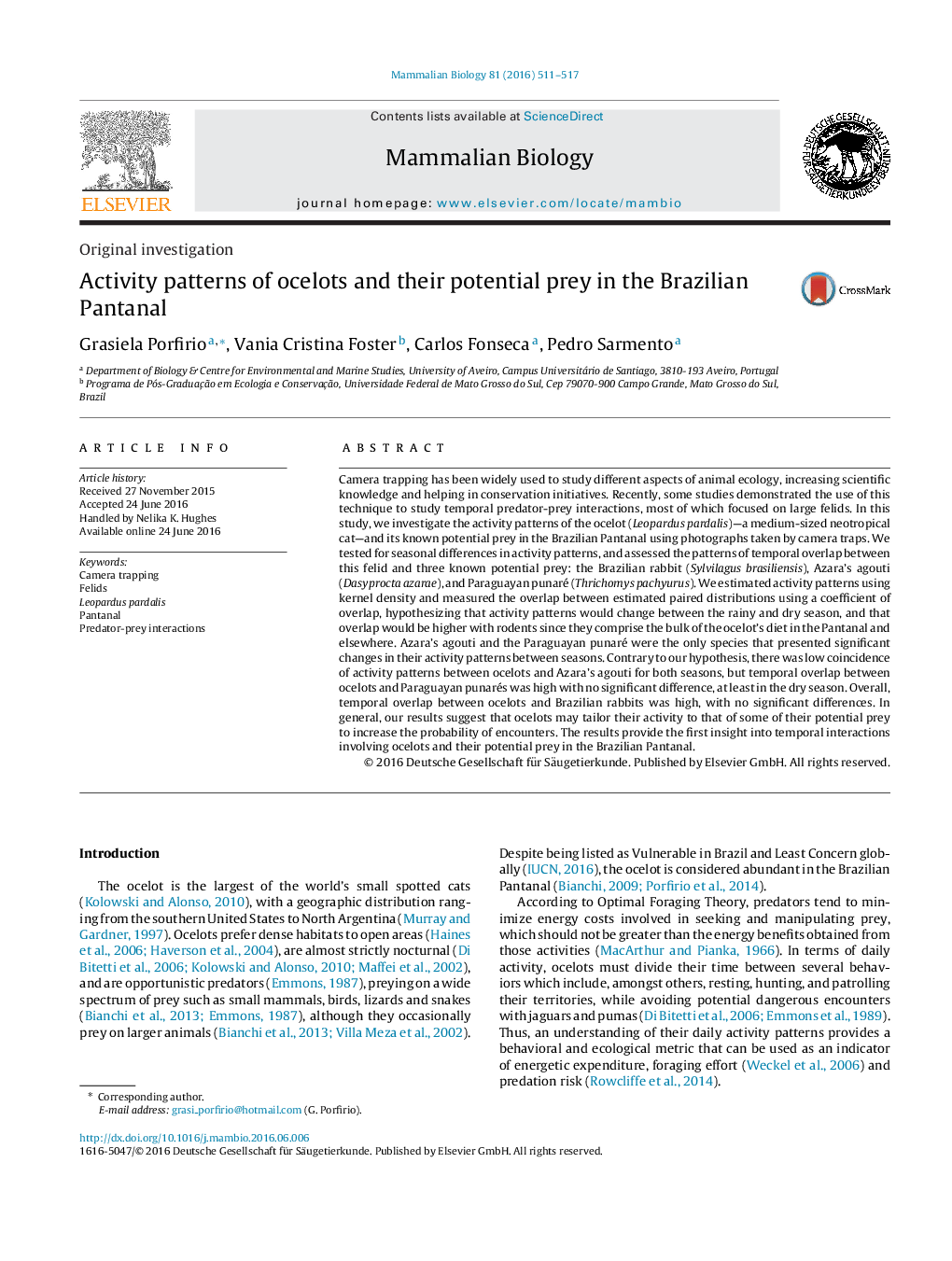| کد مقاله | کد نشریه | سال انتشار | مقاله انگلیسی | نسخه تمام متن |
|---|---|---|---|---|
| 2193291 | 1098367 | 2016 | 7 صفحه PDF | دانلود رایگان |

Camera trapping has been widely used to study different aspects of animal ecology, increasing scientific knowledge and helping in conservation initiatives. Recently, some studies demonstrated the use of this technique to study temporal predator-prey interactions, most of which focused on large felids. In this study, we investigate the activity patterns of the ocelot (Leopardus pardalis)—a medium-sized neotropical cat—and its known potential prey in the Brazilian Pantanal using photographs taken by camera traps. We tested for seasonal differences in activity patterns, and assessed the patterns of temporal overlap between this felid and three known potential prey: the Brazilian rabbit (Sylvilagus brasiliensis), Azara’s agouti (Dasyprocta azarae), and Paraguayan punaré (Thrichomys pachyurus). We estimated activity patterns using kernel density and measured the overlap between estimated paired distributions using a coefficient of overlap, hypothesizing that activity patterns would change between the rainy and dry season, and that overlap would be higher with rodents since they comprise the bulk of the ocelot’s diet in the Pantanal and elsewhere. Azara’s agouti and the Paraguayan punaré were the only species that presented significant changes in their activity patterns between seasons. Contrary to our hypothesis, there was low coincidence of activity patterns between ocelots and Azara’s agouti for both seasons, but temporal overlap between ocelots and Paraguayan punarés was high with no significant difference, at least in the dry season. Overall, temporal overlap between ocelots and Brazilian rabbits was high, with no significant differences. In general, our results suggest that ocelots may tailor their activity to that of some of their potential prey to increase the probability of encounters. The results provide the first insight into temporal interactions involving ocelots and their potential prey in the Brazilian Pantanal.
Journal: Mammalian Biology - Zeitschrift für Säugetierkunde - Volume 81, Issue 5, September 2016, Pages 511–517